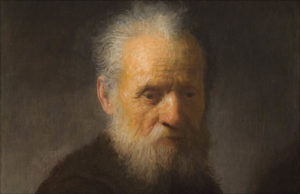 Last month a friend of mine died after a long struggle with congestive heart failure. She was eighty-nine. I have many memories of her because we first met when I was a young man in my twenties and she was nearly fifty, but the memory that kept turning around in my head that week was one from last winter when I went to visit her on the day she discovered that she could no longer do simple mathematics. She had ordered some mineral supplements for herself and a number of her friends from a company where she had a discount, and, when she tried to figure out how much each person needed to pay, she found that she couldn’t do it. She was understandably upset. What I remember about that visit was that it was raining outside and that her husband and I sat with her in their living room and tried to make light of her situation in a way that the two of us thought might help calm her.
Last month a friend of mine died after a long struggle with congestive heart failure. She was eighty-nine. I have many memories of her because we first met when I was a young man in my twenties and she was nearly fifty, but the memory that kept turning around in my head that week was one from last winter when I went to visit her on the day she discovered that she could no longer do simple mathematics. She had ordered some mineral supplements for herself and a number of her friends from a company where she had a discount, and, when she tried to figure out how much each person needed to pay, she found that she couldn’t do it. She was understandably upset. What I remember about that visit was that it was raining outside and that her husband and I sat with her in their living room and tried to make light of her situation in a way that the two of us thought might help calm her.
It’s pretty clear to me that my mind latched onto this memory because ten days before she died a standing, stage light in the theater where I was working was knocked over and hit me squarely on the head. I suffered a minor concussion and had to sit quietly for a week while my bruised brain healed. During that week of quiet and solitude, I began to meditate on the idea of comprehension. I wanted to separate the comprehension or perception of higher centers, which survive the death of the body, and the working of lower centers, which die with the body. It seemed to me that if I could place my focus more often in a way of perceiving that was untouched by old age and trauma that I would not only be more prepared, but also more detached and happier.
Essentially I wanted to try to begin to place my identity in higher centers rather than in the personality that supports and encourages a connection with higher centers. I thought about it in this way: when I write I think about it as a process whereby I translate the perceptions that come to me from higher centers into thoughts and sentences in order to clarify, for myself and others, experiences that I feel are important. What I understood to be wrong with this formulation is that I am placing my identity in the I’s, thoughts, and emotions that translate the experience of higher centers rather than in higher centers themselves. What I was looking for was a method to transfer the way I looked at myself from the part that interpreted perception to the part that generated perception.
The first problem that I faced was to be able to clearly distinguish between the perception of higher centers and the workings of the four lower centers in my day-to-day activities. In other words how could I know that what I am calling high centers is not actually the working of the lower centers, or what I believe to be the working of lower centers is not influenced by higher centers? I started by looking at certain activities and trying to observe which part of me was uppermost.
For instance when I added or subtracted two four-digit numbers in my head, I saw that, more or less, I employed the same process I use with written numbers, the only difference being that, without pen and paper, I needed to hold the image of the numbers in my head. I understood the process to be the work of two centers: the moving and intellectual centers. This kind of visualization is a capacity of the moving center, and to understand the concepts of numbers and of addition and subtraction require some participation from the intellectual center. It’s the intellectual center that can also see that numbers are just symbols and that they can represent something else, like dollars and cents or stars in a galaxy.
In normal circumstances we think of the perception of the higher emotional center as being able to observe the process of how the moving and intellectual centers add and subtract numbers. It is passive; it observes; it doesn’t take part. But is it capable of solving simple math problems without the use of the moving and intellectual centers? I believe that the answer is yes and no. In the same way that a man needs a car or some kind of vehicle to travel at sixty miles an hour, higher centers need the intellectual and moving centers to perform and communicate this kind of calculation. At the same time we can say that to invent numbers, or higher mathematics, or to see the concepts that numbers can represent, like the immensity of the size of the universe, or the insignificance of our planet in relation to the size of the universe, higher centers are needed. But without lower centers we would be unable to communicate those realizations to other people. In the same way a mathematician is dependent on the moving and intellectual centers, a painter is dependent on a capacity to move around and hold a brush in order to be able to express his vision on a canvas. Dabs of paint, like numbers and words, are symbols of reality, and the comprehension of higher centers is wordless and incorporeal. In higher centers experience does not need to be translated; it is a direct communication with reality.
When I came to the practical difficulty of observing higher centers without interference from lower centers, I latched onto the exercise of stopping thoughts. This wasn’t a choice as much as it was a natural reaction to what I understood to be the experience of higher centers. It also had the added benefit of eliminating one of the four lower centers, or at least its manifestations, from the mix. The other three centers—the instinctive, moving, and emotional centers—can not really be stopped, so for a time I tried to simply use whatever effort I thought would bring me to the higher emotional center and then try to distinguish what, in my experience, was higher perception and what was not.
This is where my experiment took an unexpected turn. What I observed was so basic that it was surprising that I had never realized it before: lower centers are meant to take the place of the three aspects of higher consciousness—will, unity, and consciousness—before and during the process of awakening higher centers. In other words the complexity of human psychology is a mechanical representation of what is possible in a bodiless state, or to put in religious terms: Man was made in the image of God.
And here also is God!!! Again God!… I am man, and such as I am, in contrast to all other outer forms of animal life, created by him in his image. ~ Gurdjieff (from the prologue of Life is real only then when “I am”)
In the first triad of the ray of creation, there are three forces that are created by one force. What this means is that the Absolute, world 1, uses His will to create world 3; which consists of the three aspects of the Absolute: will, consciousness, and unity. It is only in these two worlds that the Absolute actively participates. The lower worlds come into existence mechanically, that is without the participation of the Absolute. The ray of creation is a descending octave; it happens as a natural result of one world mechanically creating the next, lower world. But the initial movement of the ray of creation is conscious; it is, in a sense, the Absolute bringing into being a landscape in which His creation can unfold, and that world, in which he participates, is made up of three forces. World 3 is made up of three forces, and the human machine is made up of three brains, and these three brains are supposed to give us some taste of the three components of a higher state. The instinctive/moving center unify our experiences into a single unit; the emotional center is man’s organ of perception and, when it works rightly, the beginning of consciousness; and the intellectual center gives us the possibility of a direction, a way to steer our actions, or a will.
The Body as a Placeholder for the Soul. A body is necessary during the process of creating a soul because we need to have a way to organize experiences. The role of the body is to create a focal point or unity for identity. In a sense we can say that the body is a temporary placeholder for identity. Its success as a mechanism for identity to rally around is demonstrated by the almost universal belief that ‘we are our bodies.’ Even spiritual people, who profess beliefs in universal brotherhood and the necessity of being ‘one’ with others or with God, are seldom able to act selflessly in their day-to-day activities. The perception that we are our bodies is such a deeply rooted attitude that overcoming it is a major obstacle to the beginning of a spiritual life.
The unity that the body provides cannot be properly called a single identity; it should rather be thought about as bringing all the diverse psychological elements that go into forming a higher identity under one roof. The body, and the instinctive/moving centers that are the brains behind the running of the body, are not unified with the other lower centers. The body has its own motivations that are often opposed to the motivations, not only of higher centers, but also of the desires of the emotional and intellectual centers. Instead of being an aspect of unified consciousness, the body is rather a vehicle that holds together all the contradictions that make up our being. At the same time it’s easy to see that the body provides a convenient way station for consciousness and will to begin to manifest.
Conscious unity can be thought about as a field of energy that is built up and held in place for longer and longer durations of time through the control of attention, but until that energy can exist on its own, a body is needed to hold experiences.
Will and Mind. We can say that the mind, the part of us that observes perceptions and comments about them (and forms opinions) is replaced in higher states by will, and that the mind plays the part, or should play the part, of the ruling faculty before will is developed. In Gurdjieff’s analogy of the carriage, the mind is represented by the driver, who sits on the box and steers the horses, which represent the emotional center. The instinctive/moving centers are represented by the carriage itself. From this analogy we can see what the role of the mind should be. But, more often than not, it does not steer the other centers, but is steered by them. Justifying bad behavior is an example of how the mind is used, after the fact, by emotional and instinctive centers. If we become angry and express anger in ways that have consequences—maybe we are fired from our job or say things that we regret to someone we love—it should be clear that the mind is no longer steering our actions.
In a bodiless state decisions are made by a wordless will. Words don’t survive in a purely energetic existence. Actions are determined by what, for the lack of a better term, might be called ‘higher thoughts.’ This is a little difficult to imagine for people who have never had an extended out-of-body experience. (By extended I mean a duration of three or four minutes.) In such states decisions and actions have no lag time. If something occurs to you in this state, it is immediately acted out. If you think to go somewhere, you go there. There are no second thoughts or mulling over decisions.
In ordinary life the mind is designed to make decisions, but not decisions based on its own information—these would inevitably lack scale or be formatory. Its role is rather to translate the perceptions from the emotional and instinctive centers and base its decisions on these perceptions. It is the only lower center that is removed enough from experience to stand aside and observe different possibilities. It is this quality that gives it the capacity to steer or rule the other centers. But it cannot be properly called will if these decisions happen mechanically.
Emotion as Perception. The emotional center, when it works with its own energy, works with the same energy (hydrogens) as the higher emotional center. The way we distinguish the two is that emotional reactions happen without any effort on our part, and perceptions of the higher emotional center are the result of a controlled field of attention that is brought about by efforts like the transformation of suffering and self-remembering. This is not entirely the case because higher centers do sometimes happen to us, and perceptions of reality are brought about by these moments. Ouspensky likened these moments to finding money in the street: it’s nice when it happens, but you can’t live on it.
Really the emotional center is our door to higher centers. Without gaining some kind of control over our emotional reactions, particularly the expression of negative emotions, awakening is not possible for the simple, pragmatic reason that negative emotions, like anger, depression, and self-pity, burn the energy needed for higher centers to manifest.
Generally when people think about higher consciousness, they think of it as a different comprehension; the world is unveiled and we see what has been hidden. This view is not wrong, but it is incomplete. If you think about the inner efforts that are necessary for the emotional center to act as a door to higher perception, you will see that the other two aspects of consciousness, will and unity, are necessary. Some level of will and unity are required to transform suffering or to control the expression of negative emotions. When I was just beginning in this work, I knew a man who had lived in Africa for some time, and he liked to compare the non-expression of negative emotions to the way elephants are trained. Elephants, he explained, are trained by strapping a wild elephant between two trained elephants. In his analogy, the trained elephants are the moving and intellectual centers and the wild elephant is the emotional center. For example, when the emotional center becomes identified and wants to be angry, the will of the intellectual center is necessary to steer us toward the right attitudes that can diffuse the anger, and the unity of the instinctive/moving centers is needed to provide a landscape of continuous vigilance where, for instance, our movements or tone of voice can be observed.
Here we come to a major question that was brought about by my experiments: Is there any comprehension or understanding outside of higher centers? This question depends largely on how we define comprehension. If we go back to the example of adding and subtracting numbers, the question becomes: does the ability to add and subtract numbers, or divide or multiply, or find the square root of large numbers (and end up with the correct answer) indicate comprehension? I would say no if there is no understanding of what the numbers and their operations represent or imply. I would say that these operations can, like many other activities, happen mechanically; that is, without the participation of self-awareness.
So much of our understanding of higher states is dependent on being able to experience time in a different way. Self-remembering brings us to a moment in time, but when higher centers come together with self-remembering, we see the past and the future implied in that moment. The benefits of this cannot be exaggerated.
Memory. In general we think of memory as the ability to retrieve information. That information may be a person’s name or the words of a poem; it may be an emotion we felt about a particular person, or a set of movements, like the ability to type or drive a car, or a sensation or the smell of a flower. The distinction here is that the information from memories is imprinted on the rolls of the lower centers, but the memory itself exists in higher centers..
It’s hard to talk about memory and higher centers because essentially the experience of higher centers is memory. Higher centers have access to actual memories, not only to the information gathered by memories. This is what we mean when we say that the experience of higher centers is timeless. One of the ways you can think about your higher self is as a collection of all your memories brought together as a single perception in a single moment. Being present and self-remembering are two processes that fix memories as part of that experience. A person of a greater being is a person who, through the long practice of self-remembering, has access to a large store of memories. A person of a lesser being has access only to those memories that have accidentally fixed in higher centers. Wisdom, in the ordinary sense, is simply the capacity in the moment to call on that large store of experiences when speaking or making a decision. A mechanical man reacts to a difficult situation. He does not call on his accumulated experiences because he has not made the effort to fix them in his memory.
Because our connection to lower centers can be damaged by trauma and physical injury and because they are ultimately destroyed at death, the information stored on the rolls of lower centers should not rightly belong to what we think of as our identity, at least not if we want some kind of continuity between or our experience now and our experience after death.
What It Means. It cannot be an accident that the three brains that account for man’s primary psychological and physical makeup match, in a mechanical way, the three aspects of higher consciousness; they also match, if we want to make the analogy, the three attributes of the Absolute. Man is made in the image of God because his centers are a representation of the three forces—unity, consciousness, and will—that are the basis for the structures that make up the Absolute’s being. We can even say that man’s psychology is built on the same architecture as the universe, and that the universe can be thought about as the experience of the Absolute.
If the lowers centers are a mechanical representation of what is possible in a bodiless state, then we must also assume that the functioning of higher centers is the ultimate goal of man’s journey here, and, what is more, we must assume that all the other aims we pursue to the exclusion of conscious evolution—including our search for personal happiness—cannot satisfy the most primary part of our being.
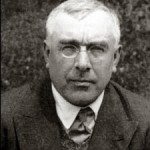 We want to go home. We all know this sometimes, and know that home is not a place but a state, but we are distracted again and again by our desire to have fame or money or to be liked or respected. We are all sometimes blinded by what we already know to be transitory.
We want to go home. We all know this sometimes, and know that home is not a place but a state, but we are distracted again and again by our desire to have fame or money or to be liked or respected. We are all sometimes blinded by what we already know to be transitory.

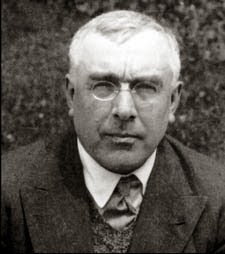
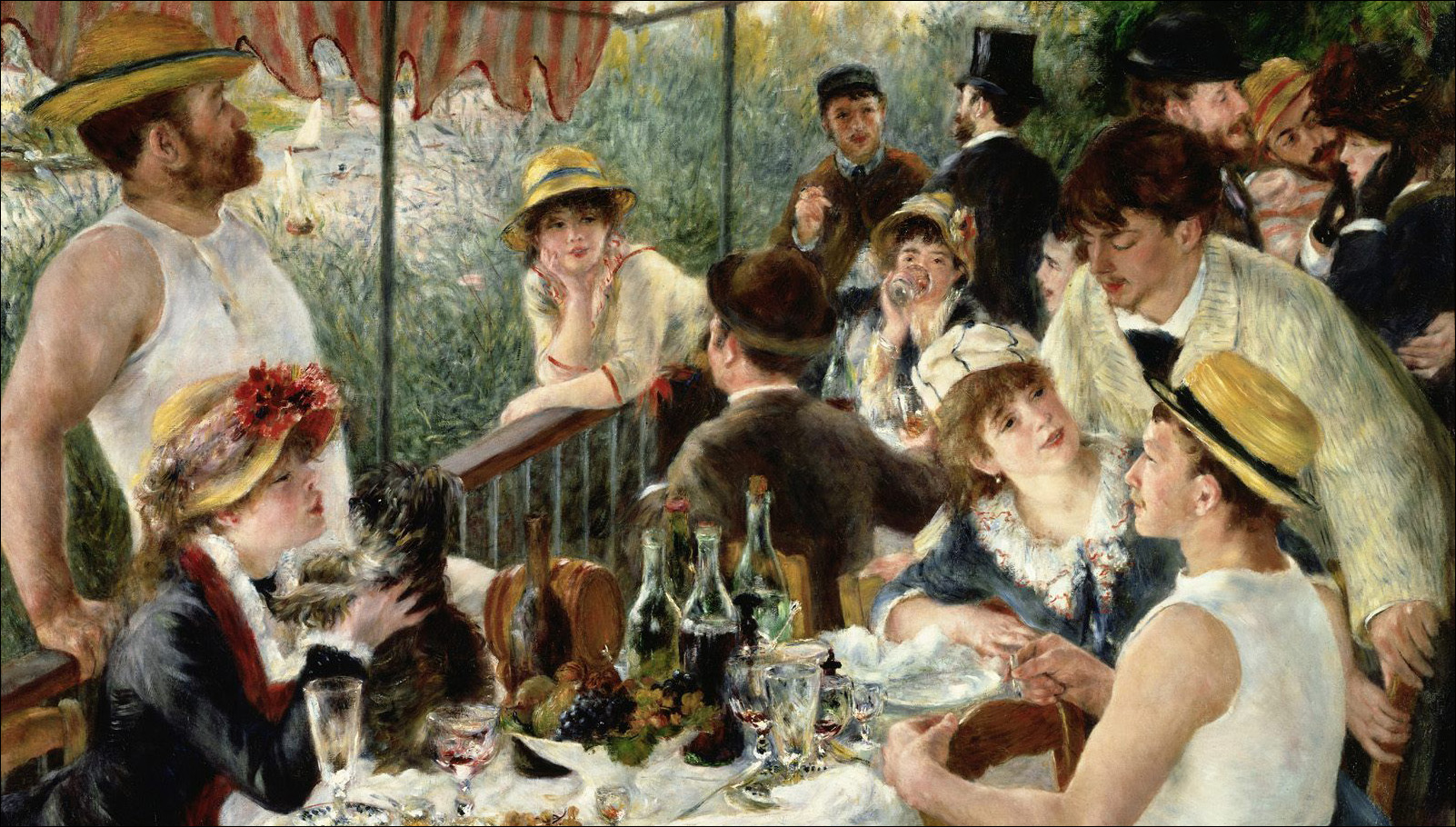
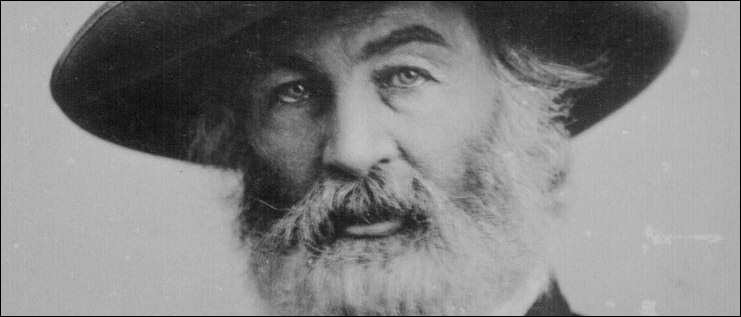

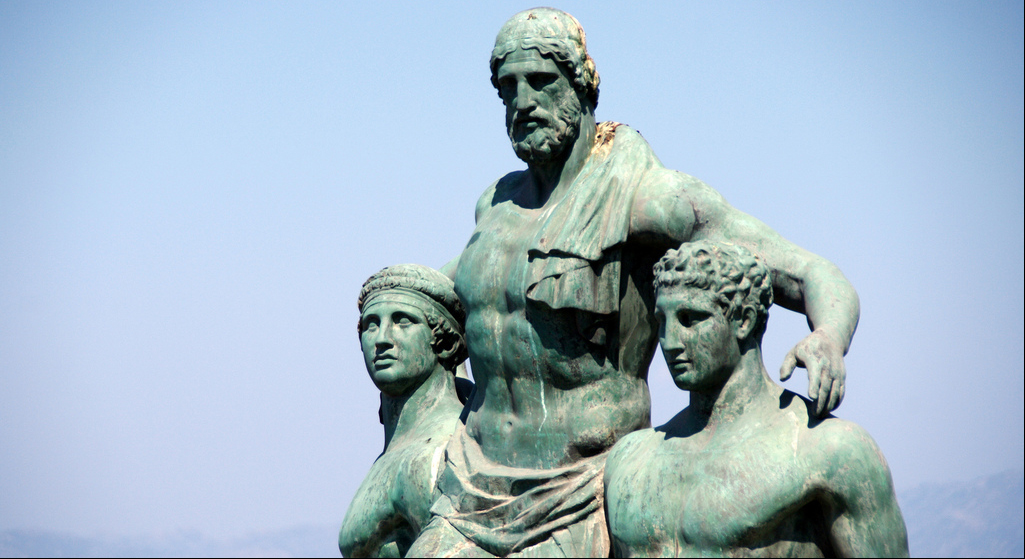





Thanks 🙂
Thanks for this very fine article. A few remarks: you wrote that adding two four-digit numbers would necessarily involve their visualisation. This seems to be not quite accurate. The act of addition is more or less a formatoric act, i.e. the same activity as adding 2 + 2. The visualisazion of a digit – as any visualisation – is an entirely different expression of the mind`s capacity. One can simultaniously calculate and visualize the according numbers as one can think two (or even more) thoughts at the same time. (Or even sense the reverberation of a thought word at certain points of the body without speaking it.) This seems to indicate that the nature of the mind has a certain substantiality or plasticity, that it can be shaped like a vibrant field into more restless or focused or still forms by one`s will.
The queston of how we relate as a functional organism to an experience which is beyond function is a very old one. R. Steiner wrote in one of his earliest epistemological works, that pure experience is experience which is divested from the self. It is an experience which is apriori to the concept or the awareness of it. To experience in this way, there has to be the cultivation of a seeing which is not functional, i.e. doesn`t operate in the way that it thinks the seeing. This might very well coincide with the higher emotional as you write as seeing the seer in the same sense might indicate the presence of the higher intellectual.
Interesting Post , thanks,
I would place the WILL as the moving instinctive.
( im thinking survival DRIVE )
Unity as the Emotional centre ( the reconciling Unifying )
and Conciousness in the mind,
But then, it’s because the Most high has been emanated down the octave that these possibilities magnify.
Excellent as always. Thank you. I will reread a few times to make sure I got it all. Its not easy writing about the work, one tends to become more mechanical the more one writes.
On my way to work I often listen to Dr. Nicoll on youtube (Commentaries). Just the other day his recording was saying that the higher mental center would be, according to Oupsensky, to penetrate with forms of insight, like suddenly seeing the solution to a mathematical problem. Solving a math problem for the first time is very different than mechanically doing math.
Dr. Nicoll said that time does not create order, time is a thing that passes through order. When we say to a friend ‘don’t bother me, I am having a tough time right now’, we are actually lying to ourselves. Time did not create the ‘tough’, our internal constructs, identifications and associations did. Time just gives room for these things to play out in the realm of cause-and-effect. This segues nicely to Ouspenksy’s lesson of the cross: we move through our lives on the horizontal of the cross, from one consecutive moment to the next, and time thus gets blamed for a lot of things. We need to move on the vertical of the cross, to lift up above time to see the order that is creating the things that time simply allows to unfold. This spot on the cross is called “now” and because it goes from the horizontal to the vertical, like a car slowing down to make a turn, it requires inner stop of all the inner momentum carried over from the horizontal activity.
Emotions are a challenge to me because like most others, I’ve only known them to be outward in direction my whole life, to emote, but the work teaches right-emotion is inward bound and carries far more information, like multiple high value thoughts, all at once. It is a receptive center!
I often think of the pyramid and can’t help to think about the four sides coming together at the apex where each side represents one of the main centers. Every child knows the sides have to arrive together or else the whole shape collapses on itself. At the very tip of our earthly Apex, coming down from above, is the other pyramid, inverted. There is a small gap between the two – we must see the rope above our heads (because of that damn cliff coming up) and reach for it – implying effort.
Off to work soon.
Best,
Tim
Thank you William Page. I have tried to read your article all the way through several times and only now managed it. The Body as a Placeholder for the Soul kept drawing me back. I was in the FOF in the 80’s and early 90’s; found Thich Nhat Hanh and began to meditate; then a few years ago joined the Gurdjieff Washington Center. GSW – founded by the late Hugh Ripman, begins with awareness of the body. The form includes ‘sitting ‘ and the Movements. I needed this piece. I hear Robert Burton’s teaching in your description of the emotional center as the gateway to higher centres. I’ve never given up on this.
I appreciate your development of the idea that the lower centres are separate vehicles for developing Unity, Will and Consciousness. It will take me a while to work on this for myself but you’ve provided a practical map. “Conscious unity can be thought about as a field of energy that is built up and held in place for longer and longer durations of time through the control of attention.” That resonates.
Thanks again.
Very best wishes for your Work.
You mange to both expand and elevate my awareness. I’m so happy to have found your words.
But just as an afterthought let me propose this:
“And here also is God!!! Again God!… I am WOMAN, and such as I am, in contrast to all other outer forms of animal life, created by HER in HER image. ~ Gurdjieff (from the prologue of Life is real only then when “I am”)
How does it feel?
Beautiful, inspiring article.